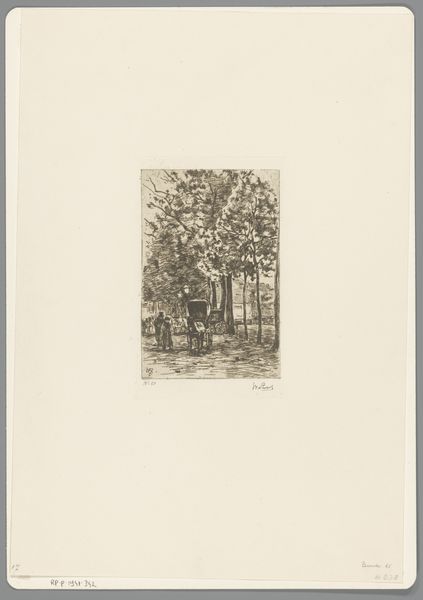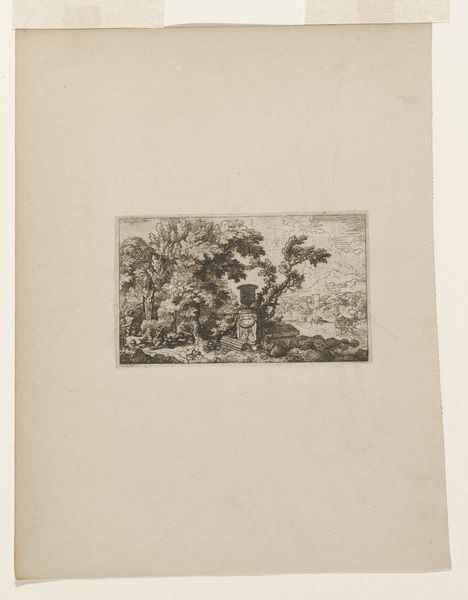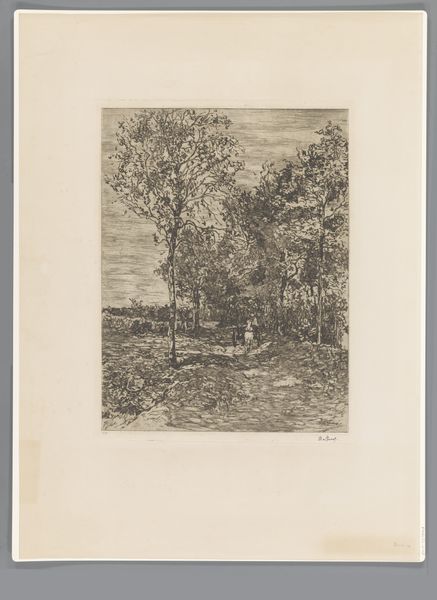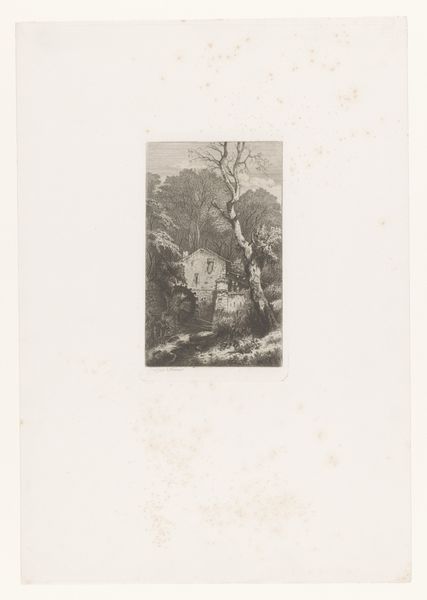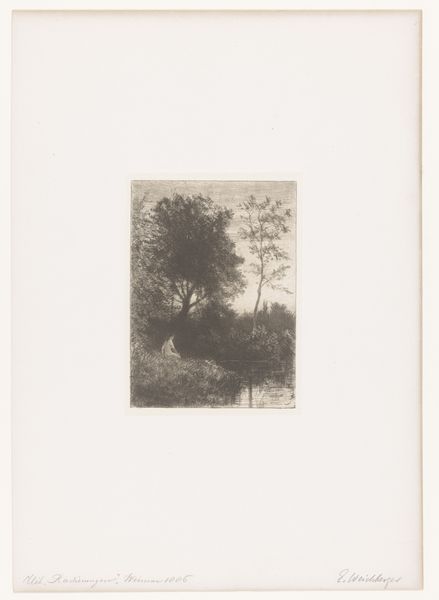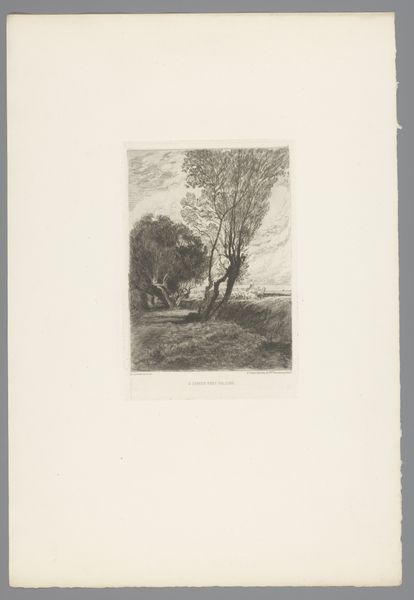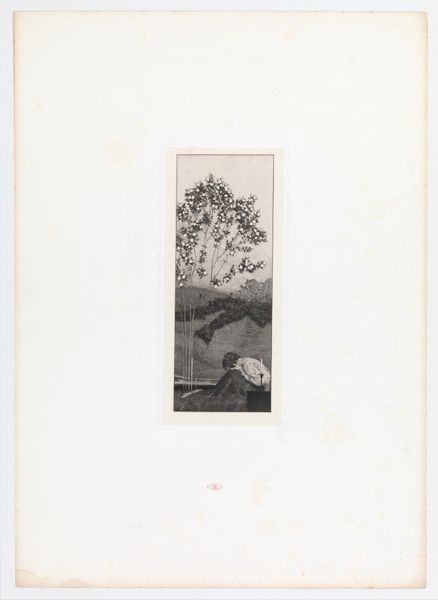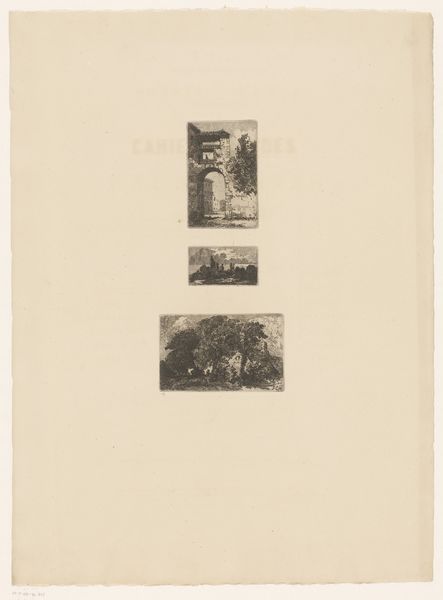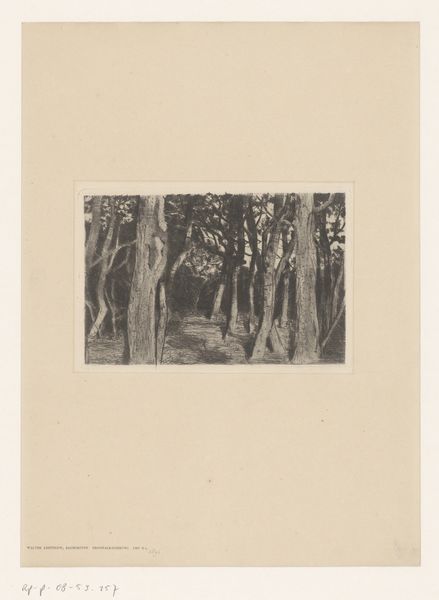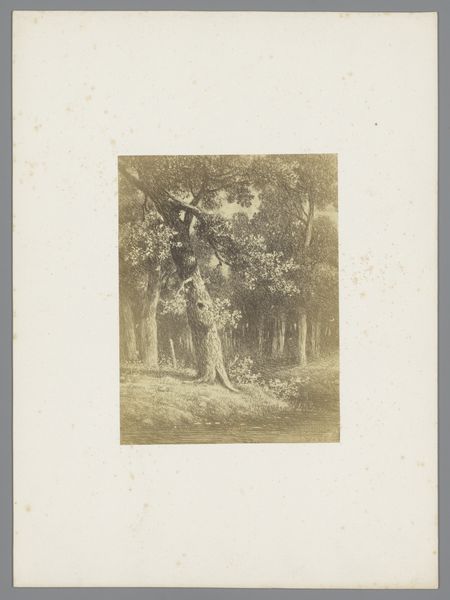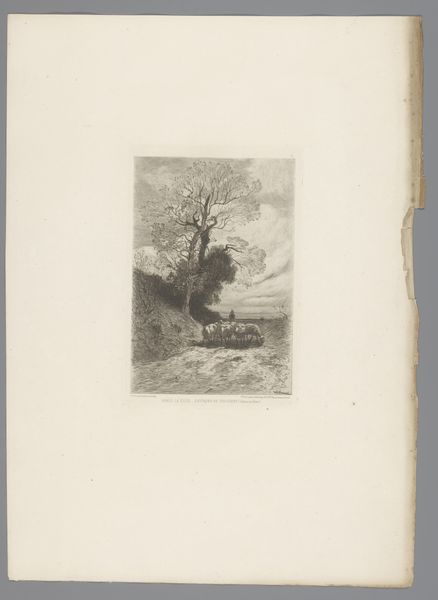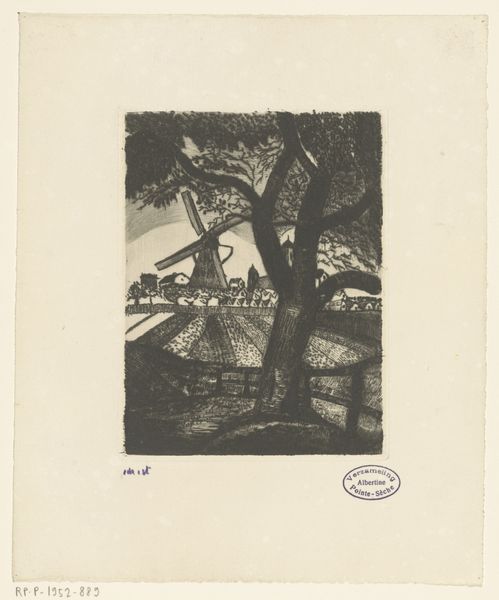
print, etching, paper
#
dutch-golden-age
# print
#
etching
#
landscape
#
paper
#
line
#
realism
Dimensions: height 181 mm, width 124 mm
Copyright: Rijks Museum: Open Domain
Editor: This is Willem de Zwart’s "Landweg met boerderijen en vrouw met kruiwagen," or "Country Road with Farms and Woman with Wheelbarrow," from around 1896-1897. It’s an etching on paper, with such delicate lines! It gives the scene a sense of stillness, despite the presence of the woman. How does the socio-political context of the late 19th century in the Netherlands play into a scene like this? Curator: That’s an insightful observation. Consider the late 19th century. Industrialization was transforming Europe. Many artists focused on images of the peasantry as a response to modern life. Did it reinforce or challenge existing social hierarchies through the artist's lens? Editor: So, depicting the rural landscape wasn't just about aesthetics; it also reflected anxieties about societal change and a longing for a perceived simpler time? Was the artist trying to validate that way of life through this piece? Curator: Exactly! Consider how images like this would circulate, being that it’s a print. Who was the audience? Was this art for the emerging middle class, who might have romanticized rural life from a distance? What institutions might have been involved in the presentation or sale of these pieces, such as galleries? Editor: That's interesting to think about the print as an accessible and potentially mass-produced object, rather than a unique artwork only for the elite. Knowing that it changes my whole perspective. Were other artists at this time working in the same way? Curator: Definitely. De Zwart was part of a larger movement interested in Realism. You see similar themes and techniques in the work of contemporaries like Jozef Israëls and the artists of the Hague School. It’s about showing life as it is, but also carefully curating *which* aspects of life they presented. Editor: I guess that is Realism. This makes me think more deeply about the politics of representation. Thank you for all the helpful comments. Curator: My pleasure! Analyzing art through the lens of history reveals so much more about not just the artwork, but also about society and culture.
Comments
No comments
Be the first to comment and join the conversation on the ultimate creative platform.

